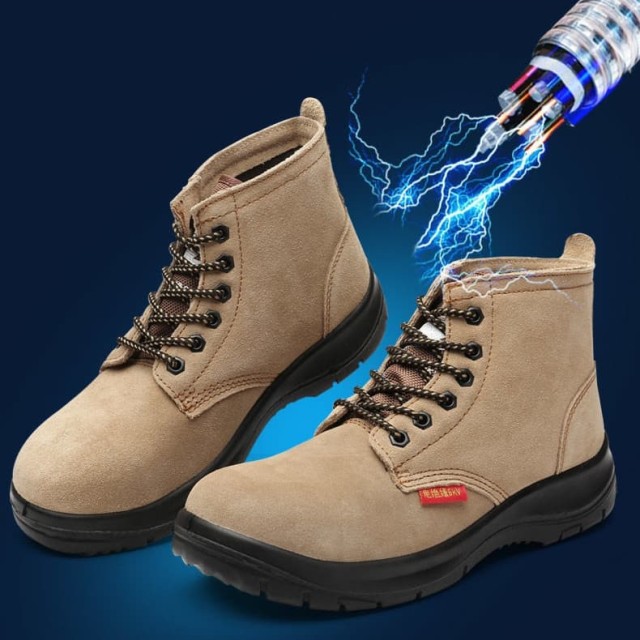When workplace hazards threaten foot safety, employers don’t just recommend protective footwear—they enforce it through rigorous standards. Understanding their methodology helps workers appreciate why specific boots are mandated and how to collaborate effectively.
Choosing Safety Footwear: Why Your Employer is the Critical Partner
Employers act as the first line of defense against workplace foot injuries, translating regulatory requirements into actionable footwear policies. Their role isn’t arbitrary; it’s rooted in two non-negotiable priorities:
-
Legal Compliance: OSHA mandates that employers provide or require footwear meeting ASTM F2413-18 standards, including:
- Impact resistance (minimum 75 ft-lbs compression rating)
- Leather uppers and non-slip soles
- Toe protection against rolling/crushing objects
-
Hazard-Specific Protections: Beyond baseline rules, employers evaluate:
- Electrical hazards (requiring non-conductive materials)
- Puncture risks (demanding midsole shielding)
- Chemical exposure (needing chemical-resistant outsoles)
Did you know? A construction worker’s steel-toe boots might differ from an electrician’s non-metallic footwear—even within the same company. Employers tailor choices to granular risks.
Decoding Employer Responsibilities in Workplace Safety Compliance
Employers follow a structured workflow to determine footwear standards:
Step 1: Hazard Assessment
Before selecting boots, employers must identify:
- Physical Hazards: Falling objects, sharp debris, or slippery surfaces
- Environmental Factors: Extreme temperatures or corrosive substances
- Job Function Needs: Long stationary periods vs. constant movement
Step 2: Standards Alignment
Referencing OSHA and ASTM/ISO criteria, employers verify that footwear:
- For electrical work, withstands 18,000+ volts without conductivity (per ASTM F2892-18)
- For oil rigs, includes oil-resistant soles to prevent slips
Step 3: Employee Training
Mandating boots isn’t enough. Employers must:
- Explain why specific features (e.g., metatarsal guards) are required
- Demonstrate proper fit adjustments to prevent discomfort
Case in point: A warehouse worker might resist heavy boots until learning how the soles prevent impalement from stray nails.
From Risk Assessments to Footwear Specifications: The Decision Framework
Employers use a tiered approach to match boots to dangers:
| Hazard Type | Footwear Feature | Regulatory Basis |
|---|---|---|
| Falling Objects | Steel/composite toe caps | ASTM F2413-18 Section 5.3.2 |
| Live Wires | Non-conductive rubber outsoles | ASTM F2413-18 EH certification |
| Molten Metal Splash | Heat-resistant leather | ISO 20349:2010 Annex A |
Why this matters: A chemical plant worker’s boots may lack steel toes if corrosive liquids are the primary risk—proving employer choices are hazard-driven, not one-size-fits-all.
Collaborative Safety: How Workers Can Engage in Footwear Selection
While employers set standards, workers can (and should) provide feedback to optimize safety and comfort:
- Report Fit Issues: Tight boots cause blisters, compromising mobility. Employers can adjust size policies.
- Flag New Hazards: Spot a previously unnoticed slippery area? Request tread upgrades.
- Suggest Breathability: In humid environments, moisture-wicking linings prevent fungal infections.
Pro tip: Frame requests around productivity. For example, “Anti-fatigue insoles could reduce fatigue-related errors during 10-hour shifts.”
Ready for Hazard-Specific Footwear Solutions?
3515 partners with distributors and safety managers to produce OSHA-compliant boots tailored to your industry’s risks. From electrical hazard-resistant designs to chemical-proof builds, we help employers—and workers—stay protected.
Next step: Ask your safety officer how 3515’s customizable footwear range aligns with your site’s hazard profile.
Related Products
- Puncture-Resistant Velcro Safety Boots for Wholesale & Custom Manufacturing
- Wholesale Customizable Suede Safety Boots - Puncture-Proof with Velcro Closure
- Wholesale Durable Breathable Safety Boots Custom OEM Manufacturer
- Durable Leather Safety Boots for Wholesale & Custom OEM Manufacturing
- Customizable Anti-Smash Safety Boots for Wholesale & Private Label Manufacturing
Related Articles
- Steel Toe Work Boots: Balancing Safety and Comfort for Demanding Jobs
- Steel-Toe Boot Safety: Separating Fact from Fiction
- How to Choose Between Steel and Composite Toe Boots for Maximum Safety
- How to Prevent Foot Injuries from Steel Toe Boots Without Sacrificing Safety
- How Modern Steel Toe Boots Achieve Safety Without Sacrificing Comfort



















